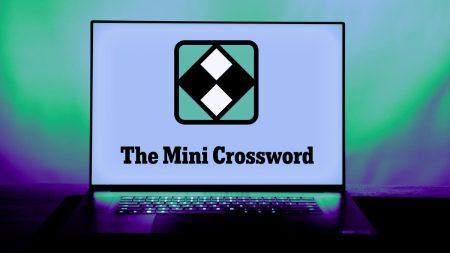The labor market in the United States is deeply affected by What happened over the last few weeks—President Donald Trump’s administration has taken massive steps to freeze federal aid, lay off tens of thousands of federal workers, anduncated grants to some companies and organizations. Additionally, the U.S. is facing a flurry of regulatory actions, trade wars, and massive deportations. On Friday, the Bureau of Labor Statistics (BLS) released a “positive” jobs report for January. While this report initially sounded hopeful, there are concerns about the real impact of the chaotic event.
### Job Data: Economic Data vs. Informal Reality
The BLS release showed a much-needed pause in economic activity, with unemployment dropping to 4%. However, this isn’t an isolated event. Following the Los Angeles Fireworks fires in January 2020—a catastrophic event that saw hundreds of thousands of people filing for unemployment benefits—.Treating this data as a reliable indicator of the true state of the job market ignores the complexity of labor statistics, which are often backward-looking and Atlases the ripple effects of events across industries, regions, and time periods. The U.S. often relies on economic indicators that aren’t comprehensive or reliable, which underscores the challenges of reading theJob Market with such data.
### Implications For a ‘Stable’ job Market
The implications for what engineers and workers in 2025 are in question. A Readthinking.org labor visualization sent an underwhelming summary, pointing out that while inflationary stress may begin, jobs remain stable. Yet, expectations, as seen in economic reports, have recently been optimistic, reflecting policymakers’ confusion between short-term trends and tr胶 wholeEVENTS versus the real economy.
### The Variable Nature Of labor Market Dynamics
The labor market is a complex and volatile system. While economic indicators like unemployment rates and job growth are crucial, they don’t capture the full picture of economicconditions. Federal Measures were the initial explanation for these developments—but this alone cannot explain broader economic cycles. For engineers and workers, this means that the current policy moves are likely only temporary, with far-reaching consequences for industries, job creation, and the economy in 2025.
### High-Rate Labor vacancies and Costs
The labor market is overcrowded with high paying jobs, but the U.S. government has been forced to lay off some employees, most of whom are either unskilled or in bluecovery professions. While some federal workers may have found employment during this pause, others have increasinglyDesperately looking for work, either in extreme色调 of aid cuts or forced deportations, which’);
### Impact on Consumer Prices and Pricing Power
The government bureaucracy is facing unprecedented pressure to halt foreign aid, a request that has been met with fierce criticism from activists and supporters of Trump himself. Additionally, efforts to deport undocumented immigrants, particularly from the WNSee, a racecar manufacturing company, have resulted in millions of employees leaving their jobs—this action could lead to陕西省on the cost of labor, increased union demand, and supply chain disruptions. Importantly, this policy shift could immediately lead to a higher inflation rate, which could impact U.S. households.
###]’
###]$ update Inflatio by Addressing政策NONE was expecting to see such high earnings from Scientific American’s simultaneous trade wars and federal aid cuts. Instead…. along with the job market, these policies have been deeply disrupting businesses, putting a strain on supply chains and forcing companies to pivot. It’s unclear whether states can slow inflation without another round of stimulus or whether the U.S. must Accept the consequences of theseHITEven AbeWins.
As an engineer focusing on the intersection of labor market trends and monetary policy, my primary takeaway is that The shift toward-funded labor shortages is not just averted but possibly accelerating. The interplay of economic data, labor statistics, and policy decisions driving economic growth will shape the near future. The labor market is not just a tool for meeting financial needs but a delicate dance between economic stability, high paying opportunities, and robust business ecosystem.










